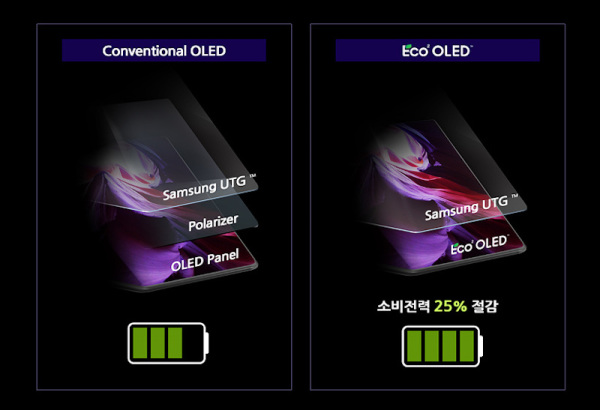[12:58 Thu,19.August 2021 by Thomas Richter] |
Samsung has developed a new type of OLED panel called "Eco²OLED" that reduces energy consumption by 25% compared to previous OLED technologies. Previously, OLED panels used a polarization layer that blocked light reflections from the outside so that the color of the panel would not show through light coming from the outside and reflected by the panel&s electrodes when the OLEDs were turned off (black), but only the emitted light from the OLEDs. The disadvantage of this method was a strongly reduced luminosity because the polarization layer also swallowed a part of the emitted light.  Samsung has now replaced this layer with a new type of laminate structure for the panel, which now blocks the reflection of light from the outside and thus enables the display of deep black, but without partially blocking the light from the OLEDs. Thus, the elimination of the polarization layer increases light transmission by 33%, resulting in a 25% reduction in the panel&s power consumption.  What&s nice is that the whole thing is no longer a research study and won&t be realized in a future project, but has already been realized in a market-ready smartphone, as Samsung has now used the new OLED panel for the first time in its just introduced foldable mobile&s Galaxy Z Fold3 smartphone. Since a large part of the energy consumption of smartphones is accounted for by the display, large energy savings like those achieved by the new Samsung OLED panel will enable smartphones to have significantly longer runtimes or a lower weight in the future. Since Samsung (along with LG) manufactures the OLED panels used by Apple in its iPhones for its Super Retina displays, this innovation may soon benefit iPhones and also other smartphones that use Samsung OLED panels. Bild zur Newsmeldung:
deutsche Version dieser Seite: Samsung verringert Energieverbrauch von OLED-Panels um 25% |






